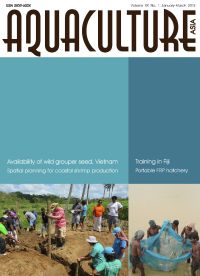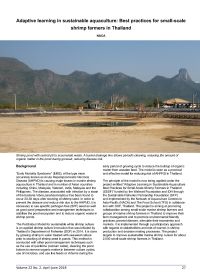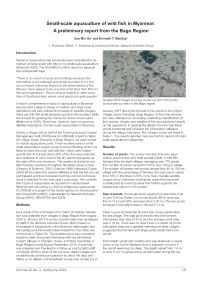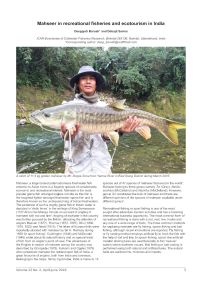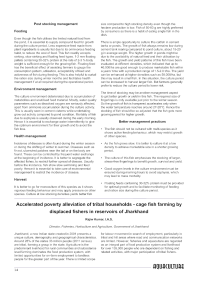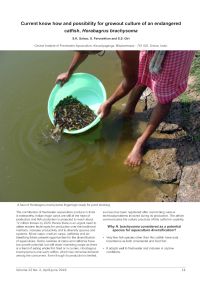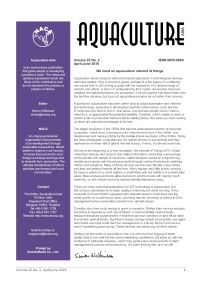Aquaculture Asia Magazine, April-June 2018
11 April 2018 | 18857 views | .pdf | 13 MB | Better management practices, Freshwater finfish, Genetics and Biodiversity, Health and Biosecurity, India, Livelihoods, gender and social issues, Myanmar, Shrimp, Thailand

In this issue:
- Mahseer in recreational fisheries and ecotourism in India.
Deepjyoti Baruah and Debajit Sarma - Small-scale aquaculture of wild fish in Myanmar: A preliminary report from the Bago Region.
Soe Min Oo and Kenneth T. Mackay - Current know how and possibility for growout culture of an endangered catfish, Horabagrus brachysoma.
S.K. Sahoo, S. Ferosekhan and S.S. Giri - Accelerated poverty alleviation of tribal households - cage fish farming by displaced fishers in reservoirs of Jharkhand.
Rajiw Kumar, I.A.S. - Adaptive learning in sustainable aquaculture: Best practices for small-scale shrimp farmers in Thailand.
NACA - NACA Newsletter.
Creative Commons Attribution.
